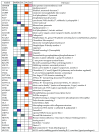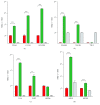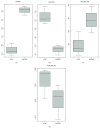Identification of Macrophage Genotype and Key Biological Pathways in Circulating Angiogenic Cell Transcriptome
- PMID: 31191690
- PMCID: PMC6525806
- DOI: 10.1155/2019/9545261
Identification of Macrophage Genotype and Key Biological Pathways in Circulating Angiogenic Cell Transcriptome
Abstract
Background: Circulating angiogenic cells (CAC) have been identified as important regulators of vascular biology. However, there is still considerable debate about the genotype and function of CAC.
Methods and results: Data from publicly available gene expression data sets were used to analyse the transcriptome of in vitro cultured CAC (CACiv). Genes and pathways of interest were further evaluated using qPCR comparing CACiv versus CD14+ monocytic cells. The CACiv transcriptome strongly related to tissue macrophages, and more specifically to regulatory M2c macrophages. The cytokine expression profile of CACiv was predominantly immune modulatory and resembled the cytokine expression of tumor-associated macrophages (TAM). Pathway analysis revealed previously unrecognized biological processes in CACiv, such as riboflavin metabolism and liver X receptor (LXR)/retinoid X receptor (RXR) and farnesoid X receptor (FXR)/retinoid X receptor (RXR) pathways. Analysis of endothelial-specific genes did not show evidence for endothelial transdifferentiation.
Conclusions: CACiv are genotypically similar to regulatory M2c macrophages and lack signs of endothelial differentiation.
Figures







References
LinkOut - more resources
Full Text Sources
Research Materials

